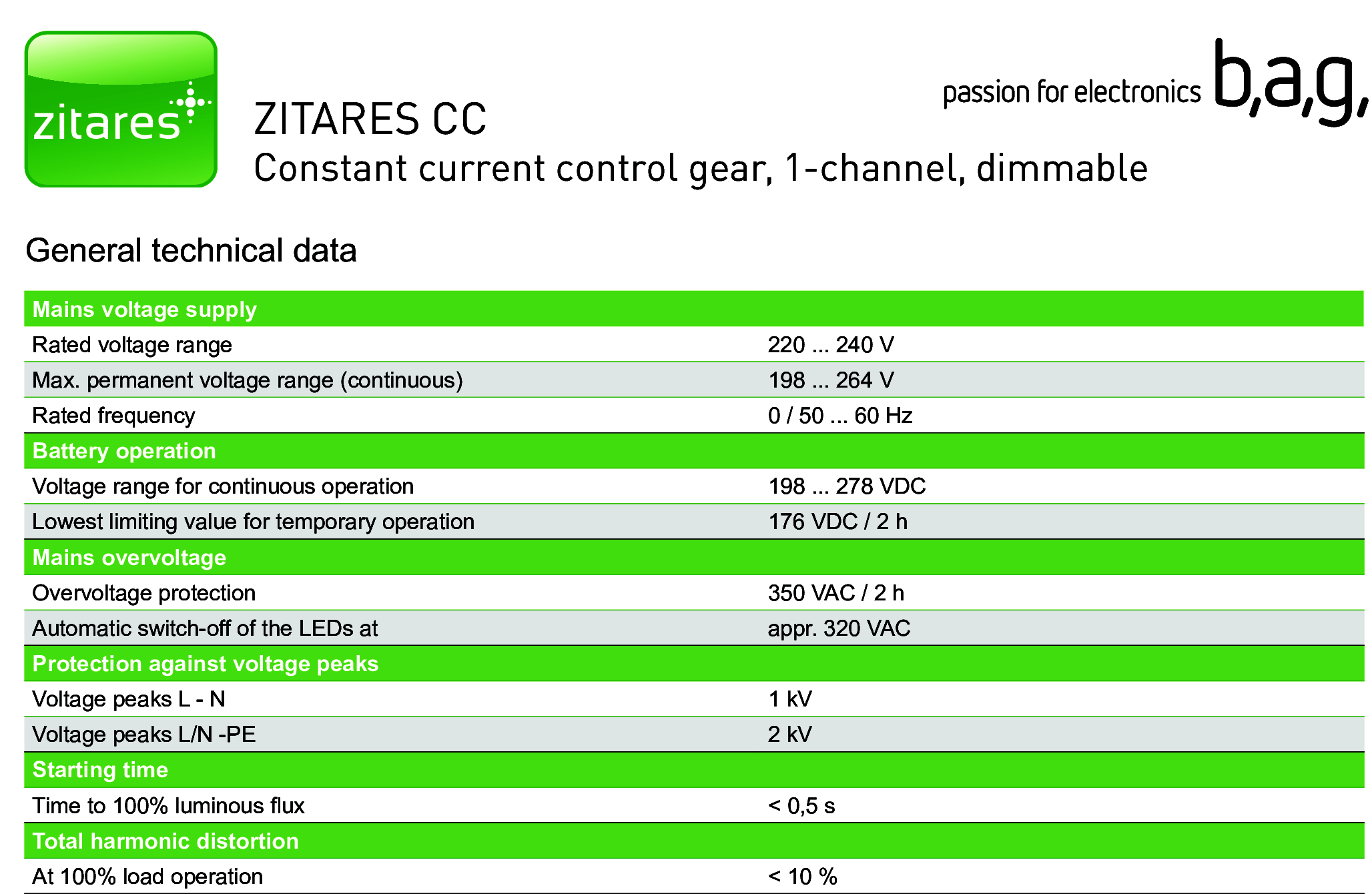Electronic control gear (LED drivers and ECG for fluorescent lamps) are suitable for a nominal voltage of 230 V, often also for a nominal voltage range between 220 V and 240 V. Due to permissible mains tolerances of ± 10%, permanent operation in the voltage range between 207 V and 253 V, or at times between 198 V and 264 V must be ensured. Beyond that, there is no standard requirement for control gear serviceability. Overvoltage protection regarding damage to control gear is also not required by standards.
Overvoltage resistance
In practice, damage due to overvoltage is often not recognized, since it does not always lead to immediate failure of the operating device but only to a pre-damage that adversely affects the service life of the electronic components. The failure of the control gear unit then occurs at a later time, however before the end of the specified useful service life.

Figure 3.189: Excerpt from the data sheet of an LED control gear unit
To achieve resistance to strain present in real electrical installations such as e.g. neutral conductor interruptions (see above), high-quality control gear units usually feature elevated overvoltage protection. Typical values are permanent dielectric strengths for up to 350 V AC over up to 2 hours and surge protection up to 1 kV between L and N/2kV between L/N and PE.
In individual cases, data on overvoltage protection is contained in the control gear unit’s data sheet (see figure).